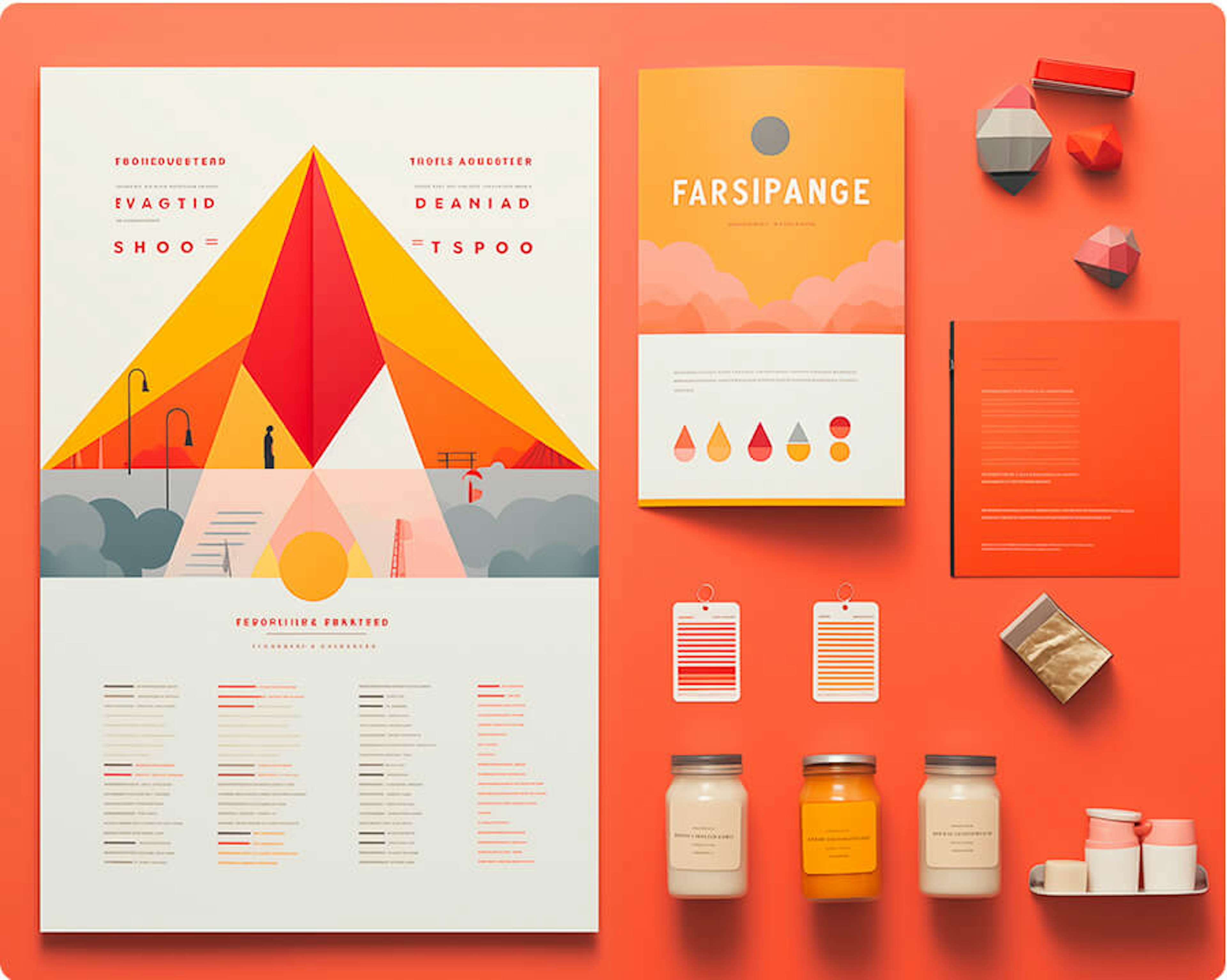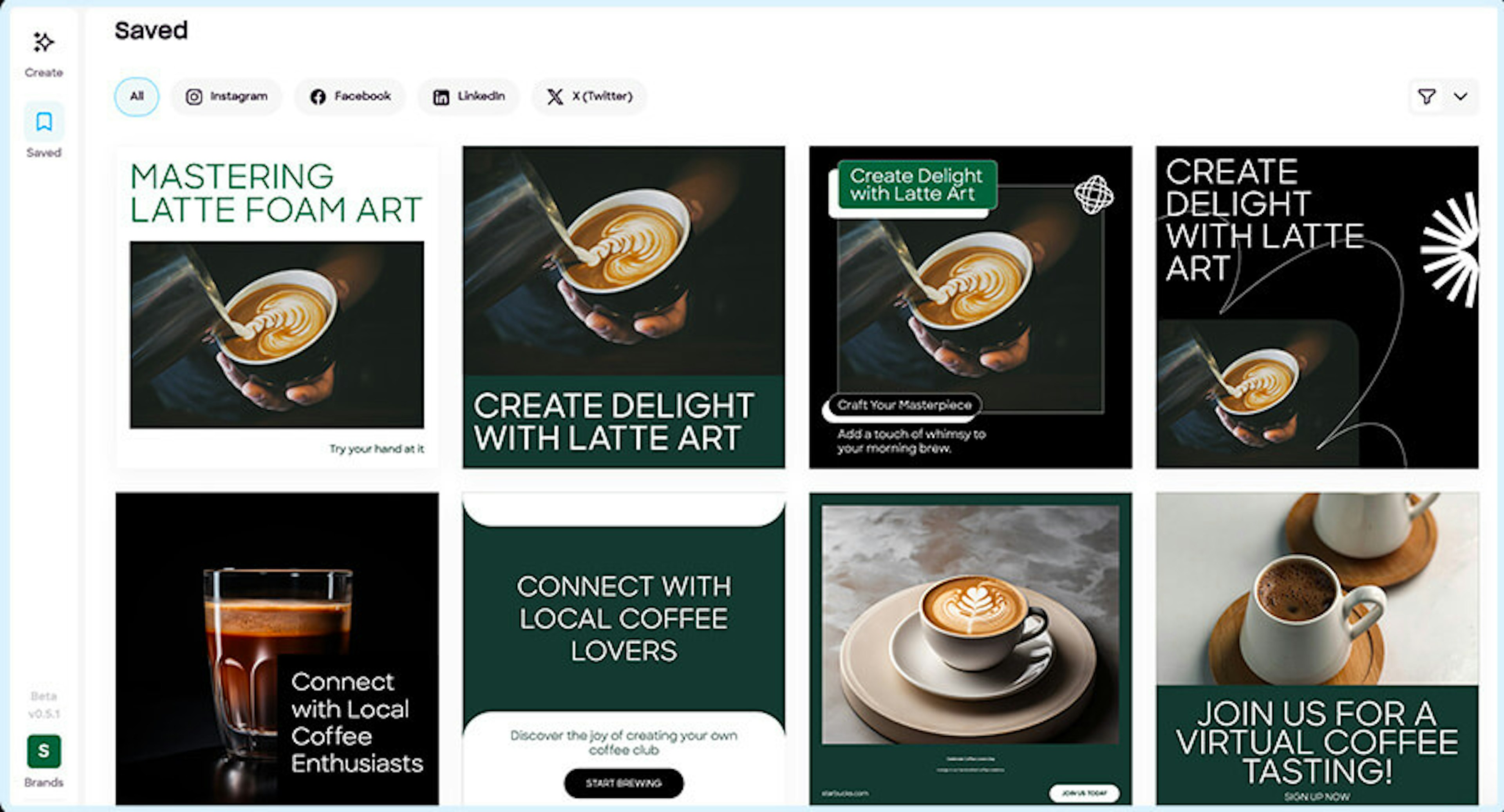The Small Business’ Handbook to Social Media Branding
Optimize small business potential with consistent branding
Written byJenn Pereira
Updated onDecember 8, 2023

Are your social media platforms lacking that "wow" factor, looking disconnected and off-brand? Struggling to establish a consistent identity for your business across all channels?
You are not alone. Many businesses grapple with maintaining a consistent and authentic brand image on social media. This inconsistency can dilute your brand message, drive away potential customers, and ultimately impact your bottom line.
Did you know that you can create a seamless and impactful brand presence across all social media platforms?
One that not only captivates your audience, but also consistently reflects your brand values, personality, and message. This is where a social media style guide comes in.
What is a Social Media Style Guide?
A social media style guide is your brand's roadmap for a successful online presence. It helps maintain your brand's voice and tone across all content, visuals, and updates. This document outlines best practices for creating and managing social media posts, ensuring a consistent brand identity across platforms.

According to Forbes, consistent brand presentation across all platforms can increase revenue by up to 23%.
Why is Brand Consistency Important?
- Enhanced Brand Awareness: By maintaining a consistent image across all social media platforms, you can amplify the visibility and recognition of your brand.
- Customer Loyalty: Consistency builds trust, leading to long-term relationships with your audience. They will keep coming back for more!
- Increase Business’ Value: Building brand equity and adding value to your business, while also improving overall communication with customers. This helps maintain a professional image and enhances credibility.
- Stand Out from the Crowd: In a saturated marketplace, a well-defined style guide sets you apart from the competition, making you memorable and leaving a lasting impression!
By integrating a social media style guide into your marketing strategy, you can ensure that your brand maintains the consistency it deserves.

A style guide plays a crucial role in ensuring consistency among multiple contributors. Its main purpose is to establish a clear and cohesive corporate voice that is present in all design and writing, thus maintaining a consistent brand representation.
Integrating Social Media Style Guide for Brand Consistency
1. Define your brand identity clearly
First, identify your voice, target audience, and overall messaging to establish a solid foundation.
What is the mission and vision of your company?
What values and beliefs drive your business?
What are the unique attributes of your product or service that set it apart from competitors?
Who is your target audience and what are their interests and needs?
What emotions do you want your brand to evoke?
What is the personality and tone of voice for your brand?
How do you want your audience to perceive your brand?
What visual elements represent your brand (colors, typography, imagery)?
How can you consistently incorporate these elements into your social media content?
How will your brand respond to feedback and criticism on social media?
By answering these questions, you can develop a solid brand identity that will serve as the foundation for your social media content and marketing strategy.
Let's take Dropbox as an example.

The brand has positioned itself as a reliable and user-friendly cloud storage solution that simplifies work and promotes collaboration. Its visual identity is minimalistic, employing a cool, calming shade of blue and clean, simple typography. The message is one of simplifying life and increasing productivity.
Through every social media post, whether it's on Instagram, Facebook, or LinkedIn, this identity is consistently echoed. This consistency helps viewers immediately recognize any post as belonging to Dropbox, creating a lasting impression in their minds.
With a clearly defined brand identity, your social media content can consistently convey your brand's essence, creating a memorable impression on your audience.
2. Create visual guidelines
Set rules for color palettes, fonts, and graphic elements to ensure cohesive visuals.
Brand visual guidelines are crucial for maintaining consistency across all platforms and mediums. Here are some key elements that should be included:
- Logo specifications: The correct and incorrect usage of the company logo, including size, placement, and color variations.
- Color palette: The primary and secondary colors that represent the brand, with their specific Pantone, RGB, and CMYK codes.
- Typography: The specific typefaces and fonts used in different contexts, including headings, sub-headings, and body text.
- Imagery: Guidelines on the type of images to use, such as photographs, illustrations, or graphics.
- Iconography: The style of icons to be used across different platforms.
- Layout and Spacing: Rules surrounding the use of white space, margins, and the arrangement of elements on a page.

Additional Tip: If you're looking to create eye-catching visual content for your social media, even without a set of brand guidelines, designstripe is here to help. Our powerful tool enables you to effortlessly produce visually consistent content that aligns with your brand. No need for complex design rules. Simply provide your website information or upload your logo and brand palette, and let our intelligent platform take it from there. It will generate stunning images and offer engaging topics for your social media posts. With designstripe, you can enhance your online presence and effortlessly achieve your marketing goals. Give it a try for free today!
If you prefer to create a visual guideline, you can find online templates and examples that can serve as a valuable reference.
Apple's Human Interface Guidelines: A guide on Apple's design principles for iOS apps, including color, typography, and layout guidelines.
IBM Design Language: IBM's design language that covers their brand identity, user experience principles, and design system.
Shopify Polaris Design System: An open-source design system by Shopify with guidelines on color, typography, layout, and user experience.
Airbnb's Design Language System: Airbnb's guide highlights the brand's design principles, iconography, typography, and color palette.
Above are a few online brand guidelines examples. Note that each company's guidelines may vary based on industry, target audience, and design preferences. Regularly review and update these guidelines as the company evolves and expands its branding efforts.
3. Craft content and writing guidelines
Outline writing style, tone, and guidelines for captions, hashtags, and post formats.
Brand content guidelines must include the following key elements:
- Brand Story: A concise narrative that conveys the essence and purpose of your brand.
- Writing Style: Brand content should be clear, concise, and engaging, reflecting our brand's personality and values.
- Tone of Voice: Describe the brand's voice and personality, including specific language to use or avoid. Maintain a consistent tone that reflects the brand's character, whether formal, informal, friendly, or professional.
- Caption Guidelines: Captions should be informative and engaging, incorporating a call to action when appropriate. Aim for captions at least 2200 characters long that encourage user interaction.
- Hashtag Guidelines: Use relevant and trending hashtags, but avoid excessive use in a single post. Incorporate brand-specific and general hashtags to boost visibility. For marketing campaigns, create a unique hashtag to monitor engagement and reach. Limit to 5-10 hashtags per post.
- Emojis: Use emojis sparingly to add personality and emotion to posts. Avoid using them in a way that may appear unprofessional or inappropriate for your brand.
- Post Formats: Follow best practices for each platform. For Instagram, use square images and reels or vertical videos. For X (formerly Twitter), use short and engaging text with a link or image.

With designstripe, you can effortlessly create on-brand and visually stunning posts for Instagram, Facebook, LinkedIn, and more. Get daily post suggestions tailored to your industry, products, and audience. Edit the text, add images, and voila! Designer-approved social media posts are ready to go.
For more detailed templates and examples, consider checking out the following resources:
Intuit's Content Style Guide: Focuses on content strategy, voice, and tone.
Monzo Content Style Guide: A great example of a brand emphasizing tone of voice and inclusivity in their content.
Mailchimp's Content Style Guide: Covers voice, tone, grammar, and punctuation rules.
Google Writing Guide: Focuses on clear and concise writing for user interfaces.
Shopify Voice and Tone: Covers the brand's voice and tone, with practical examples for different scenarios.
Remember, a brand's content guidelines should be tailored to its specific needs, audience, and platform presence. These resources should guide and inspire, but not dictate, your brand's unique approach.
Your Turn...
Boost your brand's visibility and recognition by seamlessly integrating a social media style guide. Follow the three steps above to achieve brand consistency and encourage efficient teamwork.
Remember, consistency is key to standing out from the crowd, and your social media style guide is the tool that will unlock your potential. Are you ready to take the leap?


